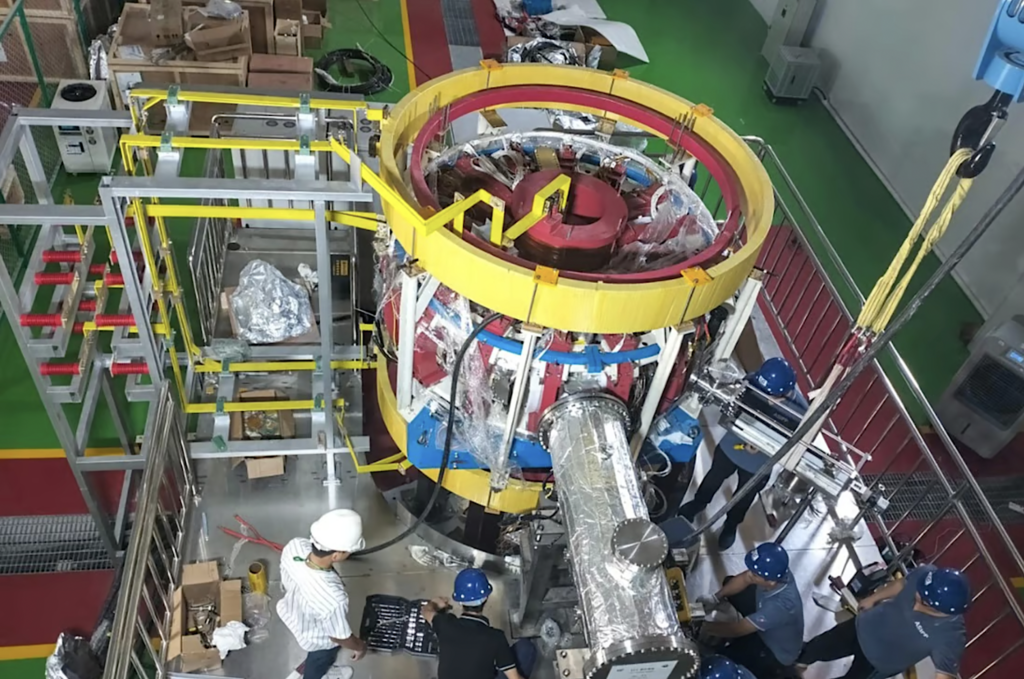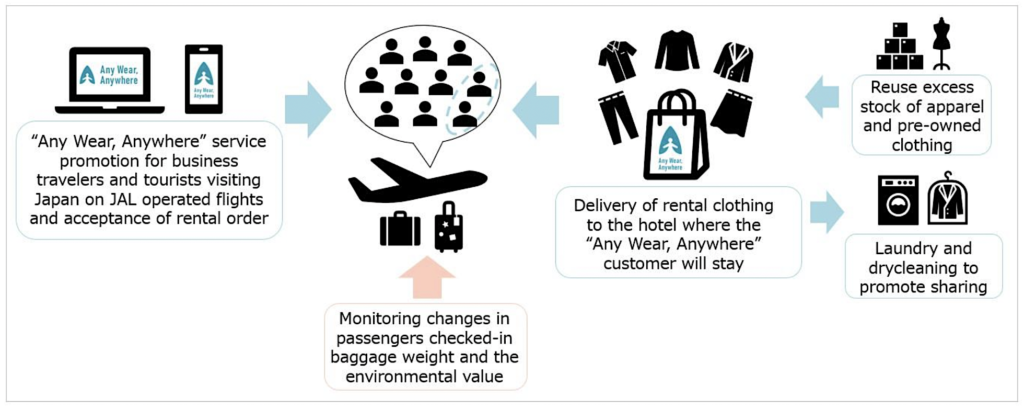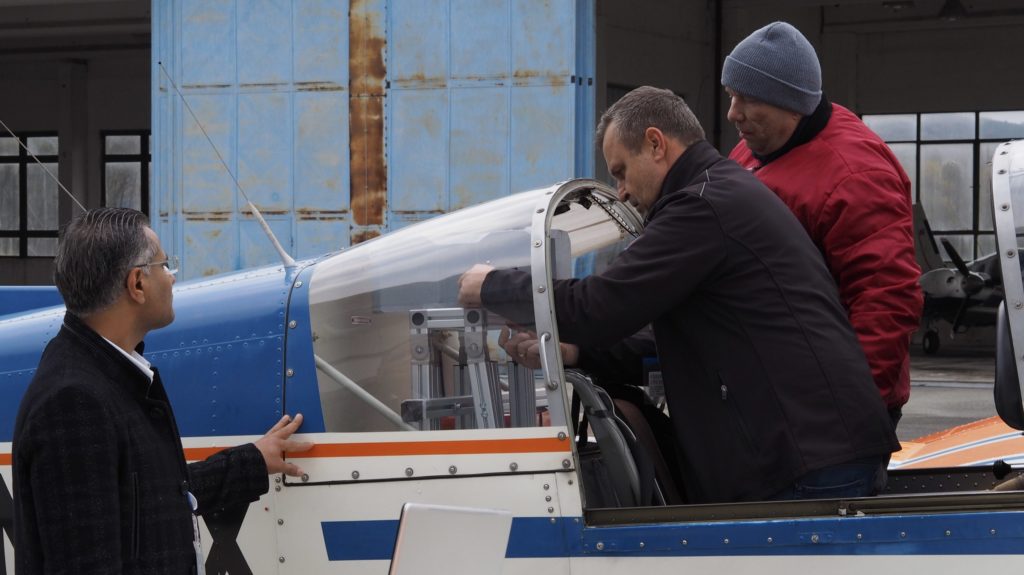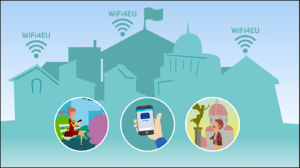| EU HUMANITARIAN AIR BRIDGE DELIVERS ADDITIONAL MEDICINES AND RELIEF ITEMS TO AFGHANISTAN

A new EU Humanitarian Air Bridge flight has arrived to Kabul to deliver nearly 100 tonnes of life-saving medical supplies and equipment to Afghanistan.
On this occasion, Raffaella Iodice, EU Chargée d’Affaires to Afghanistan said: “This issolidarity in action: Today, we welcomed the arrival of nearly 100 tonnes of medical items and medicines to Afghanistan. Our EU Humanitarian Air Bridge flights are a very good example of the EU’s assistance to the country: In cooperation with trusted humanitarian partners, the EU continues to deliver vital aid to Afghans in need.
This is the 29th cargo flight that has arrived since August 2021. EU humanitarian partners will make use of the shipment to support Afghans in need of medical treatment.
EU Humanitarian Air Bridge flights are part of the European Humanitarian Response Capacity (EHRC). Funded and operated by the EU Humanitarian Aid Operations (DG ECHO) department, these flights help to fill critical gaps in the EU’s humanitarian and emergency response. EU humanitarian assistance is delivered via trusted humanitarian partners on the ground.
The EU Humanitarian Air Bridge flight operations are intended to help reinforce humanitarian or emergency responses in countries facing fragile contexts.
These flights help fill critical gaps by facilitating the delivery of humanitarian aid, emergency assistance, and the transport of humanitarian staff when required. The initiative was initially set up in response to the transport constraints imposed by the COVID-19 pandemic.
The EU Humanitarian Air Bridge is an ad hoc initiative operated on a needs-based approach. Its implementation brings together several actors: the European Commission, EU Member States, national authorities of the destination countries, and humanitarian and civil society organisations
| CHINA’S “ARTIFICIAL SUN” SET A WORLD RECORD BY GENERATING AND MAINTAINING EXTREMELY HOT, HIGHLY CONFINED PLASMA FOR NEARLY SEVEN MINUTES.

It was last December that physicists working at the National Ignition Facility (NIF) in California succeeded in getting more energy out of a controlled nuclear fusion reaction than had been needed to start it off. That’s a big step forward, but it’s nothing like far enough to realise the dream of limitless, carbon-free power. The problem is that it involves plasma, which scientists have been studying since the 1940s, and it requires temperatures so high that it defies being held in any container. It must reach temperatures of 100-million°Kelvin, capable of melting its way through virtually anything. Most advanced countries are trying to achieve the goal, described by Omar Hurricane, a program leader at the Laurence Livermore National Laboratory in California as “Superhard. We’re basically making stars on Earth.” China’s EAST project, which has been operating since 2006, represents one of the most promising paths towards controlled nuclear fusion and its “artificial sun” tokamak recently set a world record by generating and maintaining extremely hot, highly confined plasma for nearly seven minutes. That may not sound like much but the first step towards the nuclear bomb was when humans discovered fire.
The best way to contain plasma seems to be with magnetic fields, because no known material can withstand temperatures which are several times hotter than the centre of the sun. The problem was explained in the Scientific American magazine: “In particular, deuterium-tritium fusion makes an intense flux of high-energy neutrons, which collide with the nuclei of atoms in the metal walls and cladding, causing tiny spots of melting.” There’s more: “The metal then recrystalises but is weakened, with atoms shifted from their initial positions.” In the cladding of a typical fusion reactor, the article says, each atom might be displaced about a hundred times over the reactor’s lifetime.
There are other obstacles to developing fusion energy. The fuel is a problem. Although deuterium constitutes 0.016% of natural hydrogen, and is therefore abundant, tritium forms naturally only in small quantities and, with a half-life of 12 years, it decays quickly. It can be done but the technology is untested at large volumes. Even so, the world’s largest fusion project, ITER (it means “the way” in Latin) is based in Southern France and has the support of the EU, China, India, the UK, Japan and South Korea, and it is expected to be the first fusion reactor to achieve continuous energy output on a scale comparable with a 500-megawatt power station. But ITER has been hugely expensive to build, and any commercial venture would have to be cheaper; its anticipated cost of $5.45-billion (€4.97-billion) has quadrupled and may go higher. So how about China? Could it be sneaking into the technological lead? Its tokamak reactor ran at 120-million°C for 101 seconds, longer than any other country has managed, according to the magazine Popular Mechanics.
| ECB SURVEYS EUROPEANS ON NEW THEMES FOR EURO BANKNOTES

The European Central Bank (ECB) is asking European citizens about their views on the proposed themes for the next series of euro banknotes. Until 31 August 2023 everybody in the euro area can respond to a survey on the ECB’s website (https://survey.ecb.europa.eu/euro-banknote-survey). In addition, to ensure opinions from across the euro area are equally represented, the ECB has contracted an independent research company to ask a representative sample of people in the euro area the same questions as those in its own survey.
ECB President Christine Lagarde invites everybody to participate in the survey. She said “There is a strong link between our single currency and our shared European identity, and our new series of banknotes should emphasise this. We want Europeans to identify with the design of euro banknotes, which is why they will play an active role in selecting the new theme.”
Developing our future euro banknotes
“We are working on a new series of high-tech banknotes with a view to preventing counterfeiting and reducing environmental impact,” said Executive Board member Fabio Panetta. “We are committed to cash and to ensuring that paying with public money is always an option.”
It is the duty of the ECB and the euro area national central banks to ensure euro banknotes remain an innovative, secure and efficient means of payment. Developing new series of banknotes is a standard practice for all central banks. In a world where reproduction technologies are rapidly evolving and where counterfeiters can easily access information and materials, it is necessary to issue new banknotes on a regular basis. Beyond security considerations, the ECB is committed to reducing the environmental impact of euro banknotes throughout their life cycle, while also making them more relatable and inclusive for Europeans of all ages and backgrounds, including vulnerable groups such as people with visual impairment.
The seven themes shortlisted by the ECB’s Governing Council :
Birds: free, resilient, inspiring
Birds know nothing of national borders and symbolise freedom of movement. Their nests remind us of our own desire to build places and societies that nurture and protect the future. They remind us that we share our continent with all the lifeforms that sustain our common existence.
European culture
Europe’s rich cultural heritage and dynamic cultural and creative sectors strengthen the European identity, forging a shared sense of belonging. Culture promotes common values, inclusion and dialogue in Europe and across the globe. It brings people together.
European values mirrored in nature
Europe is a living place, but also an idea. The European Union is an organisation, but also a set of values. The theme highlights the role of European values (human dignity, freedom, democracy, equality, the rule of law and human rights) as the building blocks of Europe and links these values to our respect for nature and the preservation of the environment.
The future is yours
The ideas and innovations that will shape the future of Europe lie deep within every European. The images created for this theme represent the bearers of the collective imagination through which people will create this shared future. This theme signifies the boundless potential of Europeans.
Hands: together we build Europe
Hands are familiar to all of us but no two pairs are the same. Hands built Europe, its physical infrastructure, its artistic heritage and its achievements. Hands build, weave, heal, teach, connect and guide us. Hands tell stories of labour, age and relationships, of heritage, history, and culture. This theme celebrates the hands that have built Europe and continue to do so every day.
Our Europe, ourselves
We grow up as individuals but also as part of a community, through our relationships with one another. We have our own stories and identities, but we also share a common identity as Europeans. This theme evokes the freedom, values and openness of people in Europe.
Rivers: the waters of life in Europe
Europe’s rivers cross borders. They connect us to each other and to nature. They represent the ebb and flow of a dynamic, ever-changing continent. They nurture us and remind us of the deep sources of our common life, and we must nurture them in turn.
The shortlist of themes takes into account the suggestions made by a multidisciplinary advisory group, with members from all euro area countries.
Timeline for the new designs
The outcome of the surveys will be used by the ECB to select the theme for the next generation of banknotes by 2024. After that a design competition will take place. European citizens will again have the chance to express their preferences on the design options resulting from that competition. The ECB is expected to take the decision on the future design, and on when to produce and issue the new banknotes, in 2026.
| THE EU SHOULD BAN UNREPAIRABLE PRODUCTS

The EESC (European Economic and Social Committee) has suggested that products which cannot be repaired should not be marketed in Europe, and that merely requiring producers to inform consumers when a product cannot be fixed is not enough.
The EU’s new Right to Repair is a great step forward on paper, says the EESC. But a consumer wishing to fix a smart phone or an appliance that breaks down rather than buying a new one could stumble into a number of practical hurdles that will make it too hard to or expensive to have it repaired, if not downright impossible. The EU should go further and ask Member States to ban any practice of intentionally making products unrepairable.
There can be no right to repair if objects are designed to be unrepairable, says Thierry Libaert, rapporteur for the EESC opinion.
In its opinion on the proposed directive, the EESC suggests a number of practical measures to beef it up and ensure that the repair option remains viable and affordable beyond the guarantee period, also from a business perspective. Proposals include:
- offering incentives to opt for repair – even simple ones, like offering an extension of the guarantee period when a product is repaired during that time;
- allowing innovative solutions such as 3D printing to produce spare parts, or refurbishing, which involves giving products a second life, or developing a market for second-hand parts;
- launching training and retraining programmes to teach repairers the skills they need for a job which used to be based on mechanics, but is now increasingly confronted with connected devices. More generally, there is a need to address the shortage of repair workers in Europe.
The repair sector creates value and high-quality jobs in Europe which are hard to delocalise. It generates 404 jobs per 10 000 tonnes of repaired materials – 50 times more than disposing of these materials as waste, which has become the predominant trend in recent years. 65% of consumers dispose of their faulty products, and this translates into 7.5 million tons of waste a year.
Like the Right to Repair Directive, the Green Claims Directive is intended to empower Europeans to buy sustainably. Consumers are more and more willing to do so, but have very little trust in producers’ claims about the environmental performance of their products and services and are confused by the multitude of green labels on the market.
The new directive should make environmental labels and claims credible and trustworthy, but it has weaknesses. In the EESC’s view, it should ban claims based on offsetting, since several consumer authorities and a number of court cases have found that claims such as “climate-neutral” or “plastic-compensated” based on counterbalancing emissions by investing in climate solutions projects (such as planting trees) are scientifically incorrect and always misleading to consumers.
The EESC also flags up the need for consistent legislation. « There is a danger that what’s pushed out the door comes back through the window », says EESC rapporteur Angelo Pagliara. « The Green Claims Directive should be a model for a minimum level of protection against greenwashing. Its requirements should be reflected in sectoral legislation, so that there is no way to opt out, find loopholes or weaken consumer protection ».
| ING AND EIB PROVIDE €600M IN NEW LOANS TO SMALL AND MEDIUM-SIZED ENTERPRISES IN THE NETHERLANDS, BELGIUM AND LUXEMBOURG TO BOOST SUSTAINABILITY
- The European Investment Bank is stepping up its cooperation with ING to support entrepreneurs with loans and leases with favourable terms for new investments that have a positive impact on the climate and the environment.
- This is the eighth joint programme between the European Investment Bank and ING aimed at small and medium-sized enterprises based in the Benelux since 2009 and the second programme aimed at boosting sustainability since 2019.
ING and the European Investment Bank have strengthened their long-term partnership by making over €600 million available for new loans and leases to small and medium-sized enterprises in the Netherlands, Belgium and Luxembourg. Half of this sum will go to corporate clients of ING in the Netherlands and the other half to corporate clients of ING in Belgium and Luxembourg.
In the eighth such transaction since 2009, the EIB is lending €300m to ING, which is putting in an equal amount to provide a total of €600m in new loans and leases to entrepreneurs for sustainable investments. The EIB’s loan allows ING to provide loans and leases at a lower interest rate.
Starting in 2009, the seven previous programmes have provided financing on attractive terms to around 3,000 companies, totalling €1.85 billion.
Saskia Bauters, Head of Business Banking Sales at ING Belgium: “The agreement with the European Investment Bank allows us to offer our business customers a significant interest rate discount for financing sustainable projects. The benefit fits perfectly with the other elements of our sustainability strategy. The discount can be the push that makes SMEs choose the most sustainable solution. In this way, we support our customers and work together towards a sustainable economy that will help achieve climate objectives.”

Kris Peeters, Vice-President of the EIB “”by now it is clear to almost everyone that becoming more sustainable is a must. As Europe’s climate bank and also within the framework of the European Green Deal, the EIB wants to offer support and encouragement at both the macro and micro level to green society. Thanks to this partnership with ING, we can also reach out to small and medium-sized businesses, and now give them too an extra incentive, in the form of interest rate rebates, to really start doing something about the environmental aspect of their operations.””
Applications for a loan or lease must meet ING’s usual credit conditions. In addition, ING carries out checks to ensure that the financing is used for an investment that contributes to climate and environmental improvement. To this end, conditions are laid down in the agreement between the EIB and ING that are consistent with the EU Taxonomy Loans and leases are available for companies with up to 3,000 employees. The total investment may not exceed €25 million, and the loan amount is a maximum of €10 million. The final approval of the loan or lease rests with ING.
| TRIAL OF ANY WEAR, ANYWHERE CLOTHING SHARE SERVICE FOR OVERSEAS VISITORS
Japan Airlines (JAL ) and Sumitomo Corporation will launch a trial of the “Any Wear, Anywhere” clothing sharing service (“the Service”) for foreign tourists and business travelers to Japan who use JAL-operated flights and will measure the environmental value of using the Service.
With more and more people flying again after the COVID-19 pandemic, and with the recent emphasis in sustainability, there is a growing movement around the world to promote sustainable tourism. Travelers increasingly desire to make more sustainable choices regarding their travel destinations, accommodations, transportation etc., they still lack sufficient options. For example, most travelers now enjoy eating at restaurants and staying at hotels at their destination, but they generally bring their own clothing from home.

 The concept of the Service is therefore to provide a travel experience with minimal luggage by offering clothingrentals at the destination, thereby creating environmental value. By expanding the use of the Service, we aim to create an environment where travelers can use local options for all aspects of their clothing, food, and accommodation, transforming travel and business trips into more sustainable experiences. In providing the Service, Sumitomo Corporation will be responsible for developing the reservation system as well as for the procurement, laundering, and delivery of clothes. All clothing items available for rent will be obtained from excess stock of apparel and pre-owned clothing, thereby promoting the concept of a circular economy. JAL will monitor changes in passengers’ checked-in baggage weight and verify the reduction effect of carbon dioxide emissions by reduced airplane weight due to use of the Service.
The concept of the Service is therefore to provide a travel experience with minimal luggage by offering clothingrentals at the destination, thereby creating environmental value. By expanding the use of the Service, we aim to create an environment where travelers can use local options for all aspects of their clothing, food, and accommodation, transforming travel and business trips into more sustainable experiences. In providing the Service, Sumitomo Corporation will be responsible for developing the reservation system as well as for the procurement, laundering, and delivery of clothes. All clothing items available for rent will be obtained from excess stock of apparel and pre-owned clothing, thereby promoting the concept of a circular economy. JAL will monitor changes in passengers’ checked-in baggage weight and verify the reduction effect of carbon dioxide emissions by reduced airplane weight due to use of the Service.
| OPTIMISE PROJECT PROPOSES ALTERNATIVES FOR MILITARY NAVIGATION

The OPTIMISE project has proposed a combination of technologies to provide alternative positioning, navigation and timing (PNT) systems for military navigation when Global Navigation Satellite Systems (GNSS) are disrupted.
With funding from the European Commission’s Preparatory Action for Defence Research (PADR), the OPTIMISE project – innOvative PosiTIoning systeMfor defence In gnSs-denied arEas – is part of broader initiatives to explore alternatives to GPS and Galileo for military navigation. OPTIMISE focused principally on aircraft navigation scenarios in GNSS-denied environments.
GNSS refers to a constellation of satellites providing signals from space that transmit positioning and timing data to GNSS receivers. The receivers then use this data to determine location. However, if such systems, which include Europe’s Galileo, were jammed by an adversary, the need for flexible and reliable alternatives would be crucial.
OPTIMISE, which had a budget of approximately €1.5 million, trialed reliable and secure ways to allow data from different sensors and signals to work together and achieve the integration of different positioning, navigation and timing technologies. Those included relying on star sensors, radars, ground antennae such as telephone masts, atomic clocks and data fusion software.
Real-time Demonstration
At the final session of the 28-month project at the European Defence Agency (EDA) in Brussels, OPTIMISE detailed the scenarios and requirements, and the developed technologies and validation activities including ground and flight tests. The technology integration, testing and operation of the different types of OPTIMISE sensors were showcased together with a detailed analysis of the data, via a multi-sensor/multi-platform software architecture for navigation.
The OPTIMISE demonstration showcased the systems integration and data collection during ground and flight tests hosted by the University of Žilina; such tests were complemented with simulations using the information from a reference flight trajectory.
OPTIMISE also elaborated, within its exploitation plan, a roadmap for the further development of the individual technologies and the overall project integrated system. The follow-up of part of the work within OPTIMISE will be continued in a EDA Category B (Cat. B) project. The project is also related to the work conducted under the Capability Technology Groups of EDA (namely CapTech Guidance, Navigation and Control and CapTech Space).
OPTIMISE brought together nine beneficiaries from four countries. Led by Skylife Engineering SL of Spain, it also includes MBDA ITALIA SPA of Italy, SENER Aeroespacial Sociedad Anonima, also of Spain, France’s Office National D’Etudes et de Recherches Aerospatiales, Syrlinks SAS, STAR NAV and SYSNAV SAS, Zilinska Univerzita v Ziline of Slovakia, and Spain’s La Asociación de Investigación y Cooperación Industrial de Andalucía “F. de Paula Rojas”.
OPTIMISE was selected under the 2019 call for proposals for the EU Preparatory Action on Defence Research (PADR) managed by the European Defence Agency.
OPTIMISE was selected following an EU-wide PADR call for proposals on the topic of ‘Future Disruptive Defence Technologies – Emerging Game-changers’, in the sub-topic related to autonomous positioning, navigation and timing.
| EUROPEAN STATES’ MIGRATION CO-OPERATION WITH TUNISIA SHOULD BE SUBJECT TO CLEAR HUMAN RIGHTS SAFEGUARDS

“Council of Europe member states should insist on clear human rights safeguards in any further migration co-operation with Tunisia”, said the Council of Europe Commissioner for Human Rights, Dunja Mijatović , in relation to the conclusion of a Memorandum of Understanding between the European Union and Tunisia which foresees, among other things, closer co-operation on migration.
“Comprehensive human rights safeguards must be an integral part of any migration co-operation activity between Council of Europe member states and third countries, including Tunisia. Such safeguards should ensure that support does not result, directly or indirectly, in human rights violations at the hands of those third countries. The recently reported serious human rights violations against refugees and migrants in Tunisia only make the inclusion of such safeguards more pressing.
The text of the Memorandum of Understanding between the EU and Tunisia relating to migration only includes very general language on human rights, and no concrete indication of whether safeguards would be put in place or what those would be. I therefore call on Council of Europe member states which are also EU member states to press for immediate clarification of the human rights safeguards that will be put in place and to insist that the migration-related aspects of the agreement are not further implemented until adequate safeguards have been established. Such safeguards should include, at a minimum, the publication of a comprehensive human rights risk assessment, full transparency in the provision of funding, the setting up of independent monitoring mechanisms to assess the human rights impact of specific activities under the agreement, and the ability to suspend any activities found to be negatively impacting on the human rights of refugees, asylum seekers and migrants.
Failure to establish clear and concrete safeguards in migration co-operation activities will only add to the worrying trend of human rights being sacrificed to European states’ attempts to externalise their responsibilities.”
| SYRACUSE 4B MILITARY COMMUNICATION SATELLITE SUCCESSFULLY LAUNCHED

SYRACUSE 4B WILL JOIN SYRACUSE 4A IN ORBIT TO BOOST COMMUNICATIONS CAPABILITIES FOR FRENCH ARMED FORCES
The SYRACUSE 4B military communications satellite was successfully launched by an Ariane 5 from the Guiana Space Center, Europe’s Spaceport in Kourou, French Guiana.
The two satellites in the SYRACUSE IV defense communications system, SYRACUSE 4A and SYRACUSE 4B, were built for the French Armament General Directorate (DGA) (Direction Générale de l’Armement) by the consortium of Thales Alenia Space (a joint company between Thales 67% and Leonardo 33 %) and Airbus Defence and Space. As the lead contractor, Thales Alenia Space was responsible for the SYRACUSE 4A satellite, launched in 2021, and the payloads for both SYRACUSE 4A and SYRACUSE 4B. Airbus Defence and Space is in charge of the SYRACUSE 4B satellite, based on the all-electric Eurostar platform, and supplies key components for the two payloads.
SYRACUSE 4B will join SYRACUSE 4A in orbit, forming the SYRACUSE IV satellite segment, which replaces the previous SYRACUSE III generation (SYRACUSE 3A and 3B). SYRACUSE 4A and 4B are designed to be compatible with the current system, while also delivering additional capacity and new functions for armed forces, especially more capacity and flexibility, plus faster throughput and expanded coverage. Because of its improved flexibility, the satellite can meet the needs of forces deployed anywhere in the coverage zone, while also efficiently managing its X and Ka-band bandwidth resources.
Unlike commercial satellites, SYRACUSE 4A and 4B have to stand up to a wide variety of potential threats, including jamming, to guarantee service continuity and resilience. Both SYRACUSE 4B and SYRACUSE 4A feature the latest cyber-defense and data encryption technologies, sectors in which Thales is a leader for both ground and space applications.
Other contributors to the SYRACUSE IV system include Telespazio, the joint company between Leonardo (67%) and Thales (33 %), in charge of satellite positioning and stationkeeping, while also supporting the French defense ministry by contributing to operation and upgrades over the satellites’ design life of more than 15 years. Thales supplies the user ground segment, based on its Modem 21 high-performance, high-security transmission system. It also provides hardened tactical and naval ground stations, along with airborne stations, to ensure communications availability and confidentiality for all types of threats.
“Thales Alenia Space’s teams can be very proud of the launch of the SYRACUSE 4B satellite, which is an excellent example of collaboration within French industry,” said Hervé Derrey, President and Chief Executive Officer of Thales Alenia Space. “For SYRACUSE 4B, we reproduced the same payload that has been operating flawlessly on SYRACUSE 4A, launched in 2021 and qualified in orbit since September 2022, providing armed forces with secure end-to-end communications.”
France’s SYRACUSE “milsatcom” program kicked off in 1980 and handles all military communications between mainland France and units deployed in theaters of operation. By ensuring full strategic independence, this program addresses requirements for long-range and secure communications, protected against electronic warfare (EW), without requiring local ground infrastructure. The first three generations of SYRACUSE satellites, built by Thales Alenia Space as prime contractor, were deployed from 1984 to 2015.
| FREE WIFI4EU ALL OVER EUROPE

If you are travelling through Europe and need internet, you can connect to a WiFi4EU network in one of the 7 233 towns and villages to enjoy free Wi-Fi in public spaces such as parks, libraries, museums, or town squares. WiFi4EU is funded under the Connecting Europe Facility by the EU.
Citizens and guests of local municipalities within the European Union benefit from a free Wi-Fi connection in public places thanks to WiFi4EU.
WiFi4EU is an initiative led by the European Commission to bring public Wi-Fi connections to local municipalities. WiFi4EU seeks to create a pan-European network of public hotspots for Europeans in municipalities throughout the European Union.
Local municipalities applied for a voucher worth €15,000, which covers the costs of installation of a Wi-Fi hotspot in the town, functioning for a minimum period of three years. All local residents and visitors of the successful municipalities are now able to access the internet freely.
WiFi4EU is completely free to use. The rules laid out by the European Commission ensure that neither monetary remuneration, nor other indirect forms of payment, via advertising or data farming, are on the WiFi4EU network for the three-year period of engagement.
Connecting to the WiFi4EU network is very simple. The European Commission mandated that the network’s name (its SSID) must be ‘WiFi4EU’. This is the same everywhere, making the WiFi4EU hotspots recognisable across Europe. On connecting to the free Wi-Fi network for the first time, you will be redirected to a secure login page (a captive portal). You will be able to sign in with a simple click-to-connect functionality. Once you have connected to the Wi-Fi network, you can begin to surf freely using WiFi4EU! What is more, if you disconnect and reconnect within a 12-hour period, you will not be required to log in again.
| ZEROWASTE PIX 2023 PHOTO COMPETITION

This year the European Environment Agency is inviting avid photographers across Europe to capture both the good — sustainable, and not so good — unsustainable — production and consumption patterns, habits and behaviours in our daily lives. This year’s EEA photo competition ‘ZeroWaste PIX’, calls us all to reflect on the state of modern lifestyles.
The aim of ZeroWaste PIX is to raise awareness and inspire change, conveyed through photographs, whether it is an image of factories, landfills or a community garden that bring people together around a shared sense of purpose.
Our production systems and consumption patterns are vital aspects of our economy and livelihoods. As consumers, we enjoy numerous conveniences and benefits to our quality of live due to industrial production. However, we know this comes at a huge cost to our environment and increasingly to our own health and well-being. Our production and consumption systems have led to increased pollution and relentless resource extraction, degrading our nature and causing biodiversity loss.
Participants can enter photos in four categories:
- Circular and smart
- Eco-lifestyles
- Wasteful production
- Consumption mania
The winner of each category will receive a cash prize of EUR 1,000. Additional prizes are awarded to the best youth entry as well as the public’s favourite photo, determined by an online vote.
Participants have until Tuesday, 3 October 2023 to submit their photographs. Winning entries will be announced 10 November 2023.
Who can participate?
Participants have to be at least 18 years old and citizens of one of the 32 EEA member countries or six cooperating countries, including the 27 EU Member States, Iceland, Liechtenstein, Norway, Switzerland, Turkey, Albania, Bosnia and Herzegovina, Kosovo*, Montenegro, North Macedonia, and Serbia.
To Submit Your Photo, follow this link: https://europeanenvironmentagency.wufoo.com/forms/p1ucmg9a0k7tbql/

